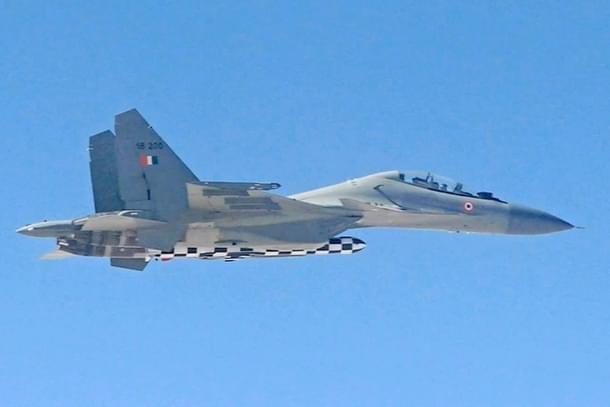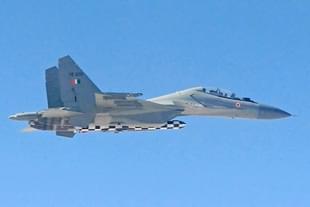News Brief
India Will Carry Out Multiple Launches Of BrahMos Missile In The Last Week Of This Month; Here’s Why
Swarajya Staff
Nov 16, 2020, 01:36 PM | Updated 04:42 PM IST
Save & read from anywhere!
Bookmark stories for easy access on any device or the Swarajya app.


The Indian armed forces are all set to conduct multiple test-firings of the BrahMos supersonic cruise missile in the last week of this month.
Reports say the three defence services and the Defence Research and Development Organisation (DRDO) are getting ready to conduct these launches.
These reports come at a time when the BrahMos missile has already been tested at least three times over the past 50 days. The missile was test-fired from a ground-based launcher on 30 September, launched by INS Chennai in the Arabian Sea on 18 October and fired by a Su-30 MKI fighter on 30 October.
The BrahMos test-fired on 30 September was an extended-range version of the cruise missile. Since India has become a member of the Missile Technology Control Regime, BrahMos Aerospace has been working on extending the range to the missile.
Over the last two years, BrahMos has also been tested with an indigenous seeker. The version of the missile currently in service uses a Russian-supplied seeker for terminal guidance. Russian-origin parts increases the cost of the missile and keep the percentage of indigenous content below the desired level.
Although there is no confirmation from DRDO or BrahMos Aerospace, the launches likely to take place later this month could be aimed at testing the extended range of the missile or its indigenous seeker, or both.
The indigenous seeker being developed for BrahMos is likely to be ready within a year, the chief executive officer and managing director of BrahMos Aerospace, Sudhir Mishra, had said in an interview with Livefist recently.
The missile has been tested with an India seeker, Mishra had said, adding that the indigenous effort has already been successful to a “great extent”.
“We have conducted two tests, one on land and the other one to target a ship, and we have been successful to a great extent,” Mishra said.
“We are again going to conduct flight test in few months,” he added.
“I feel it shouldn’t take us more than six months or eight months to come up with a production prototype [of the seeker]. Then we will go for serial production,” Mishra told Livefist in an interview on the blog’s YouTube channel yesterday.
“Maybe within a year we will be able to deliver the production version of the seeker,” he said, adding that the seeker BrahMos Aerospace is currently working on is a radio frequency (RF) seeker. The agency will also be able to deliver an imaging seeker for the missile in another two years, Mishra added.
The BrahMos Aerospace CEO also confirmed that work on extending the range of the missile is under way, adding that the range and capability of the existing inventory can also be improved without much effort.
“In the existing inventory, we can extend the range and capability without much effort,” he told Livefist in the interview.
“To improve the range of the missile, we have to improve the propulsion power of the engine, and that we have done,” he said.
The other reason for these tests, experts say, could be to show strength and resolve in the Indian Ocean amid the ongoing standoff with China in eastern Ladakh.
While media reports say the two sides have come closer to finding a solution, nothing appears to have changed on the ground along the Line of Actual Control and the government has not confirmed the reports.





